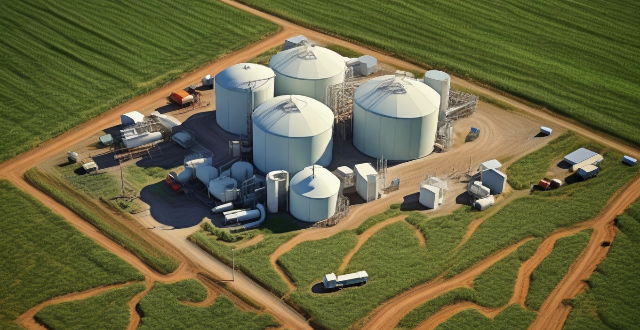Greenhouse gas emissions vary significantly across different industries due to the nature of their operations, energy sources used, and the level of technology employed. The largest emitters include electricity generation, transportation, manufacturing, agriculture, construction, services, and waste management. Electricity generation is one of the largest emitters of greenhouse gases, especially when powered by fossil fuels like coal, oil, and natural gas. Renewable energy sources such as wind, solar, and hydroelectric power generation have much lower emissions as they do not involve burning fossil fuels. However, there are still emissions associated with their production and installation processes. In transportation, cars, trucks, and buses that run on petrol or diesel emit CO2 and other pollutants. Electric vehicles reduce these emissions but their environmental impact depends on how the electricity used to charge them is produced. Aviation has a significant carbon footprint due to the fuel efficiency of aircraft and the altitude at which they release emissions. Maritime transport also contributes to greenhouse gas emissions through the use of heavy fuel oil in ships' engines. Iron and steel production, cement manufacturing, and chemical processing are among the heaviest emitting industries because they require high temperatures which are typically achieved through burning fossil fuels. Sectors such as textiles, electronics, and food processing generally have lower emissions than heavy industry but still contribute to the overall carbon footprint through energy consumption for machinery operation and industrial processes. Livestock farming produces methane (CH4), a potent greenhouse gas, during digestion. Manure management also leads to emissions of both CH4 and nitrous oxide (N2O). Farming practices including tillage, fertilizer use, and irrigation can result in N2O emissions and CO2 emissions from soils. The production of building materials like concrete and glass is energy-intensive and generates CO2 emissions. Additionally, deforestation for timber contributes to carbon emissions. The design and construction methods of buildings can influence their long-term energy consumption; poorly insulated buildings will require more energy for heating and cooling, leading to higher emissions over time. Emissions come from office equipment, lighting, and heating/cooling systems in office buildings. The type of energy source used for these purposes greatly affects the total emissions. Hotels and restaurants contribute to emissions through their energy use for cooking, refrigeration, and guest accommodation needs. Decomposing organic waste in landfills produces CH4, which traps more heat than CO2 over a 20-year period. Processes such as wastewater treatment and incineration also generate greenhouse gases depending on the technology and management practices used. By implementing cleaner technologies, improving energy efficiency, and shifting towards renewable energy sources, it is possible to reduce the environmental impact of various sectors and work towards a sustainable future.

Greenhouse Gas Emissions in Different Industries
Greenhouse gas emissions vary significantly across different industries due to the nature of their operations, energy sources used, and the level of technology employed. Here is a detailed analysis of how greenhouse gas emissions differ across various sectors:
1. Energy Production
- Electricity Generation: This is one of the largest emitters of greenhouse gases, especially when powered by fossil fuels like coal, oil, and natural gas. The combustion of these fuels releases large amounts of carbon dioxide (CO2).
- Renewable Energy Sources: Wind, solar, and hydroelectric power generation have much lower emissions as they do not involve burning fossil fuels. However, there are still emissions associated with their production and installation processes.
2. Transportation
- Road Transport: Cars, trucks, and buses that run on petrol or diesel emit CO2 and other pollutants. Electric vehicles reduce these emissions but their environmental impact depends on how the electricity used to charge them is produced.
- Aviation: Air travel has a significant carbon footprint due to the fuel efficiency of aircraft and the altitude at which they release emissions.
- Shipping: Maritime transport also contributes to greenhouse gas emissions through the use of heavy fuel oil in ships' engines.
3. Manufacturing
- Heavy Industry: Iron and steel production, cement manufacturing, and chemical processing are among the heaviest emitting industries because they require high temperatures which are typically achieved through burning fossil fuels.
- Light Industry: Sectors such as textiles, electronics, and food processing generally have lower emissions than heavy industry but still contribute to the overall carbon footprint through energy consumption for machinery operation and industrial processes.
4. Agriculture
- Livestock Farming: Ruminants like cows and sheep produce methane (CH4), a potent greenhouse gas, during digestion. Manure management also leads to emissions of both CH4 and nitrous oxide (N2O).
- Crop Production: Farming practices including tillage, fertilizer use, and irrigation can result in N2O emissions and CO2 emissions from soils.
5. Construction
- Building Materials: The production of building materials like concrete and glass is energy-intensive and generates CO2 emissions. Additionally, deforestation for timber contributes to carbon emissions.
- Energy Efficiency: The design and construction methods of buildings can influence their long-term energy consumption; poorly insulated buildings will require more energy for heating and cooling, leading to higher emissions over time.
6. Services
- Office Buildings: Emissions come from office equipment, lighting, and heating/cooling systems. The type of energy source used for these purposes greatly affects the total emissions.
- Hospitality: Hotels and restaurants contribute to emissions through their energy use for cooking, refrigeration, and guest accommodation needs.
7. Waste Management
- Landfills: Decomposing organic waste in landfills produces CH4, which traps more heat than CO2 over a 20-year period.
- Waste Treatment and Disposal: Processes such as wastewater treatment and incineration also generate greenhouse gases depending on the technology and management practices used.
In conclusion, understanding the variation in greenhouse gas emissions across different industries is crucial for developing effective mitigation strategies that target the most significant sources of emissions. By implementing cleaner technologies, improving energy efficiency, and shifting towards renewable energy sources, it is possible to reduce the environmental impact of various sectors and work towards a sustainable future.